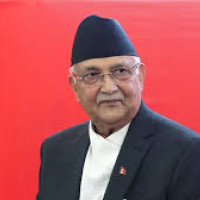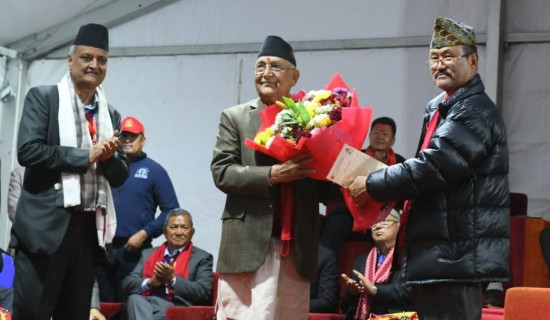- Friday, 19 December 2025
Day Of Fasting And Faith
It is the month of Bhadra and Nepali ladies are seen dressed in their finery as they shuttle from one Teej party to another. It is not just within Nepal; Nepali girls and women throughout the world will be attending parties, enjoying the company of fellow celebrants, tucking into delicious cuisine, and celebrating the joy of being a woman as Teej nears in a week. The festival of Teej has a religious mythology according to which Goddess Parvati underwent a long and rigorous penance for the divine union with Lord Shiva. The marriage between Goddess Parvati and Lord Shiva was then sealed in a religious ceremony following Goddess Parvati’s worship. It led to a tradition of celebrating Hartalika Teej in Hindu religion every year.
Celebrated for three days, Teej is a festival much loved by Nepali women as unmarried women worship for a suitable husband, while married women worship for the longevity of their husbands. More or less exclusively celebrated by Hindu girls and women, Teej highlights the sacred bond of marriage and its sanctity in Hindu society. Marriage is certainly a sacred union, and as such, it is also a social institution and tied with it are high hopes of joy, bliss and happiness.
Teej festival is popular among the ladies, as these three days of celebrations involve their eager participation as a socio-cultural and religious event. However, each year as Teej nears, feminists are riled up by the acute emphasis that is placed upon the sacrifice of women when it comes to marital ties. Feminists argue that despite being a festival of women, Teej puts to the forefront the well-being of males only. Many women celebrators forgo even water throughout the day of fasting on the second day of Teej. Then there is the tradition of organising and attending lavish ‘dar’ parties (prior to the day of fasting) that only focus on the glamour of the celebration, amped up with a feeling of comparison and competition.
Festivals are an integral part of any society. Especially, Hindu societies are woven in the fabric of religious and traditional rites and rituals of festivals, during which members of society actively participate, sealing social ties. But along with the vital significance of such celebrations, there are also negative aspects which have to be culled as modern Hindu societies integrate into the global scenario. In foreign nations, the Nepali diaspora too eagerly observe festivals such as Teej but as mentioned previously, extravagant parties and gatherings dim the essence, instead only highlighting the fun and lavishness.
The essence of festivals such as Teej is to appreciate what it means to be a woman, particularly in the context of sacred union in marriage. Therefore, the focus has to shift towards a healthy perspective in feminism and how it can be integrated into Nepali societies in the current age. As more and more Nepali girls grow up with the global influences of pop culture, such as literature, the internet and entertainment media, they must be taught Nepal’s own rich culture and how it can be balanced between modernism and traditionalism. Festivals such as Teej must be an opportunity for Nepali girls and women globally to commemorate their womanhood and its significance without losing its profound message in modern times.

















